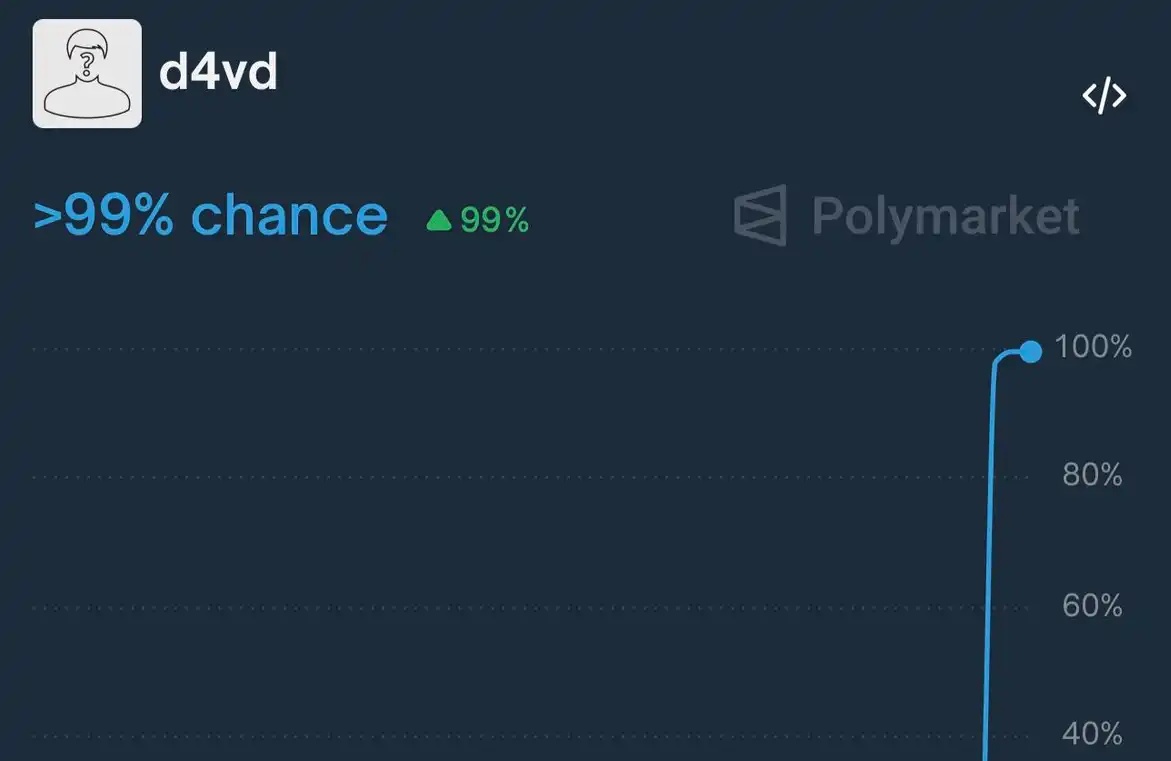Quarterly Revenue Expectation Soars 268x, How High is Galaxy Digital's Position in the Coin Stock Craze
The development of cryptocurrency OTC platforms has had two key turning points so far. For the year 2024, it was the approval of Bitcoin and Ethereum ETFs, while regions such as the EU and Dubai have gradually introduced frameworks (MiCA, VARA) allowing OTC desks to operate legally at scale, with institutions needing to quickly acquire the underlying assets. By 2025, it was after the concept of the "Crypto Capital" was proposed by former U.S. President Trump, leading to a complete 360-degree turn in traditional finance. Following the introduction of various crypto-friendly policies, early 2025 saw Bitcoin reaching new highs and Ethereum surging, fueling an institutional asset allocation frenzy and propelling explosive growth in OTC platform trading.
Typically, OTC trading involves direct matching of buyers and sellers. They provide a single quote, hence there is no slippage or bidding; transfers are completed through custodial wallets or institutional accounts. Because orders never touch a public limit order book, the market never sees your hand. Acting as the "dark pool" of the cryptocurrency market, OTC desks do not disclose specific trading details of their users, but unlike traditional finance, we can follow the breadcrumbs on-chain.
One of the largest Bitcoin OTC trades to date occurred in July 2025, where a total of 80,000 BTC exchanged hands at around $9 billion, yet the public market remained largely unaffected. The orchestrator behind this transaction was Galaxy Digital, one of Wall Street's most respected "crypto OTC trading firms." This event led to a 268x year-on-year revenue surge in its Q2 financial report.
What role have OTC platforms played in this wave of compliance? And how has Galaxy Digital leveraged its resources to maneuver in the crypto equities trading space? The publication BlockBeats conducted a series of studies on this topic.
The Third Pillar of Crypto Liquidity
With this institutional frenzy, OTC platforms have truly become the "third pillar of liquidity" in the crypto market, alongside centralized exchanges (CEX) and decentralized exchanges (DEX). For large funds, CEXs/DEXs struggle to directly handle buy orders in the hundreds of millions without causing significant price swings. Therefore, OTC platforms play the role of institutions' "white gloves," completing positioning or unwinding behind the scenes on their behalf.
Throughout the entire year of 2024, there was no month where OTC trading volume was lower than the same period the previous year, indicating that market participants increasingly prefer to trade through private channels rather than openly on the market. In their eyes, the crypto industry has shifted from being on the speculative fringe to a viable asset allocation option, with Wall Street shifting from skeptics to participants. And in 2025, this growth trajectory has seen exponential growth.
Finery Markets points out that an increasing number of traditional financial leaders are shifting from a stance of "observe" to neutrality or acceptance, which is a key driver behind the surge in over-the-counter (OTC) trading volume. As more trades take place in dark pools, surface market fluctuations may be significantly smoothed out. According to Finery Markets' Q4 2024 report, the overall trading volume on OTC platforms increased by 106% compared to the previous year, with the OTC spot volume in the first half of 2025 showing a 112.6% year-over-year growth compared to the first half of 2024.

It is worth noting that while the regulatory environment in Europe and the United States has been improving, the Asian OTC market is also on the rise. Licensed OTC platforms in Hong Kong such as OSL, emerging platforms in the UAE and Southeast Asia are attracting global large order liquidity. At the same time, some traditional market makers such as Flow Traders are actively involved, using high-frequency and quantitative strategies to provide institutional clients with bilateral quotes for large cryptocurrency trades, enhancing execution efficiency and reducing market impact costs. These factors collectively reinforce the OTC's status as the invisible pool of liquidity in the cryptocurrency market.
The Rising Star: Galaxy Digital
Among the many OTC players, Galaxy Digital, founded by Mike Novogratz, is undoubtedly the star of this institutional buying frenzy. Galaxy is a well-known crypto investment bank that operates a high-touch OTC trading business covering trading, investment, asset management, consulting, and mining. Its clients include listed companies, hedge funds, and other top players. However, the main pillar of its profitability lies in OTC spot trading and investment. With the backing of the founder's 20 years of Wall Street experience and the company's compliance shaping as a publicly traded entity, an increasing amount of institutional funds are flowing in, and Galaxy's platform has witnessed stunning large-scale trading activities involving mainstream assets like ETH, BTC, as well as popular coins like SOL and BNB.
Epic 80,000 BTC Trade Lands Smoothly
As mentioned earlier, the OTC transaction involving 80,000 BTC within 4 days, valued at a whopping $9 billion, set a record as one of the largest single trades in crypto history, with Galaxy Digital acting as the intermediary.
Galaxy Digital announced on July 25th that it had been entrusted to complete this massive BTC sale for an early investor from the "Satoshi era." Allegedly, this was part of the investor's estate planning, and Galaxy did not disclose the client's identity, only stating that the transaction was a step in a broad wealth management strategy. Surprisingly, the liquidation of these 80,000 BTC had almost no impact on the market. Starting from July 17th, there was on-chain activity from ancient addresses moving Bitcoin to Galaxy Digital's OTC address over a few days, yet the sale of these 80,000 BTC did not reflect in the Bitcoin price. Though shortly after Galaxy's announcement, the price temporarily dropped by nearly 4% and briefly fell below the $115,000 mark, it quickly rebounded to around $117,300 within a few hours.
Analyst Jason Williams pointed out that this massive sell-off has been "completely absorbed" by the market, while another analyst, Joe Consorti, also exclaimed, "80,000 bitcoins (over $9 billion) were sold at market price, and the BTC price remained almost unchanged." On one hand, this once again tested the current market's OTC depth, with counterparties able to take on such a large sell order shortly after exchange matching. On the other hand, it also highlights the importance of "dark pool trading" in today's cryptocurrency field. In fact, based on publicly known OTC addresses (bc1q0), the single address may handle billions to tens of billions of dollars worth of bitcoin each week via the Galaxy OTC Desk, and the actual volume may be even higher than this figure.
ETH Whales' Favoritism
In Q2 2025, there were multiple unusually large buy orders on the Ethereum blockchain, attracting close attention from the community. Since July 9th, 14 new wallet addresses have collectively purchased a staggering 856,554 ETH, worth approximately $3.16 billion, through OTC desks like Galaxy Digital or FalconX. These wallets had no history on the chain at one point and then suddenly received large amounts of ETH through OTC channels, indicating that "big players are quietly accumulating ETH."
Blockchain analysis firm Arkham Intelligence pointed out that starting from late July, a newly created wallet address (0xdf0A…2EF3) accumulated approximately $300 million worth of ETH in just 3 days through Galaxy Digital's OTC trading desk. This address once held 79,461 ETH with a cost of around $300 million, calculated at the then-market value of approximately $282.5 million, experiencing an unrealized loss of around $26 million ($8.7% drawdown). This indicates that the whale's average purchase price was relatively high but they are still firm in adding to their position.
Just on today, August 5th, three new addresses acquired a total of 63,837 ETH worth about $236 million through Galaxy and FalconX. EyeOnChain disclosed some of the buyer addresses, including 0x55CF…679, 0x8C6b…60, 0x86F9…446, etc. It is estimated that the cumulative buying intensity of these addresses ranges from tens of millions to hundreds of millions of dollars, with a single wallet holding over 110,000 ETH at one point (worth over $400 million).
Where did this buy order come from? Signs point to SharpLink Gaming, which has been boldly declaring since June 2025 that it will mimic MicroStrategy's strategy by continuously accumulating Ethereum as its primary corporate treasury asset. According to its announcement and on-chain data, SharpLink aggressively bought nearly 500,000 ETH from June to the end of July through ATM issuance and over-the-counter trades. As of July 27, the company held 438,190 ETH, a 21% increase from a week ago, with a purchase of over 77,000 ETH in a single week at an average price of around $3,756.
By the end of July, SharpLink had accumulated approximately 449,000 ETH. Moving into August, the company continued its buying spree. On July 31, it invested $43.09 million to purchase 11,259 ETH, and on August 4, it bought an additional 18,680 ETH from Galaxy. Analysts suggest that SharpLink's total holdings have surpassed 499,000 ETH, with an average cost of around $3,064, currently valued at approximately $1.8 billion, with an unrealized gain of about $275 million. Such a large-scale Ethereum buy order was almost entirely conducted through OTC desks like Galaxy and FalconX, to the extent that even the founder of Wintermute joked that "It's almost impossible to buy ETH on our OTC desk now because the whales have already swept the supply away." In addition to SharpLink, currently the second-largest ETH holder, Bitmine, the largest ETH holder, is also a deep partner of Galaxy.

Address 0xCd9 has transferred over $800 million worth of ETH to SharpLink. $153 million of ETH from 0xdf0, 0x286, around $300 million, and several other addresses are associated with both.
Although we cannot pinpoint the exact sources of such intensive large-scale off-exchange positions, this undercurrent is nevertheless becoming a key force influencing Ethereum's supply and demand dynamics. According to BlockBeats, based on rough calculations from several of Galaxy's major on-chain OTC addresses, over the past 90 days, off-exchange trades in ETH have already reached $5.44 billion, with a monthly average turnover of approximately $1.8 billion in ETH.

Based on Arkham's disclosure, the four OTC wallets 0x335, 0x15, 0x46f, 0xb9c received.
Playing the Dual Role of Referee and Player, MicroStrategy Drama Unfolds on BNB Chain
If Bitcoin (BTC) and Ethereum (ETH) were the protagonists of 2024, then starting from the second half of 2025, Binance Coin (BNB) has also stepped onto the stage of institutional positioning. In July, an unexpected news broke: CEA Industrial, a U.S.-listed company on Nasdaq (stock code VAPE, a company originally focused on agricultural temperature control and electronic cigarettes), announced a complete transformation into a "BNB Treasury Company." It plans to raise up to $1.25 billion through private placement and options exercise to purchase BNB. This plan caused VAPE's stock price to skyrocket by 550% in a single day.
Even more eye-catching is that the mastermind behind VAPE's crypto pivot is David Namdar, co-founder of Galaxy Digital. He will serve as the new CEO of VAPE, while Russell Read, a partner at 10X Capital and former Chief Investment Officer of the California Public Employees' Retirement System (CalPERS), will serve as CIO. Namdar stated that he will use the funds, as high as $500 million (expandable to $1.25 billion), to actively build a BNB position over the next 24 months, including open market purchases, strategic trades, and earning returns through staking and decentralized finance.
This signifies that BNB will welcome its first large-scale institutional buyer in the open market, and OTC channels will undoubtedly play a key role. Due to the high concentration of BNB issuance and circulation, Binance and its founder Changpeng Zhao CZ reportedly control 71% of circulating BNB. To absorb hundreds of millions of dollars' worth of BNB without causing significant market fluctuations, one must rely on large over-the-counter transactions or protocol transfers. Galaxy Digital's extensive OTC network and liquidity resources will provide strong support for Namdar's "BNB version of MicroStrategy action." As the world's third-largest cryptocurrency by market capitalization, this move marks its official entry into the institutional asset allocation landscape.
Whether it is Coinbase's focus on custody, trading, and on-chain ecosystem integrated trading platforms, consultancies like Galaxy Digital providing OTC trading and coin-stock relationship brokering, or the rapid integration of traditional brokerages and trading platforms, various sectors of the cryptocurrency field are moving towards compliance and resource aggregation towards the top. The recent launch of Crypto Projects may be a public declaration of this significant trend, heralding the era of dominance by compliant institutions. In the future, cryptocurrency OTC platforms, this "transparent dark pool," may occupy a more prominent ecological position.
Welcome to join the official BlockBeats community:
Telegram Subscription Group: https://t.me/theblockbeats
Telegram Discussion Group: https://t.me/BlockBeats_App
Official Twitter Account: https://twitter.com/BlockBeatsAsia











